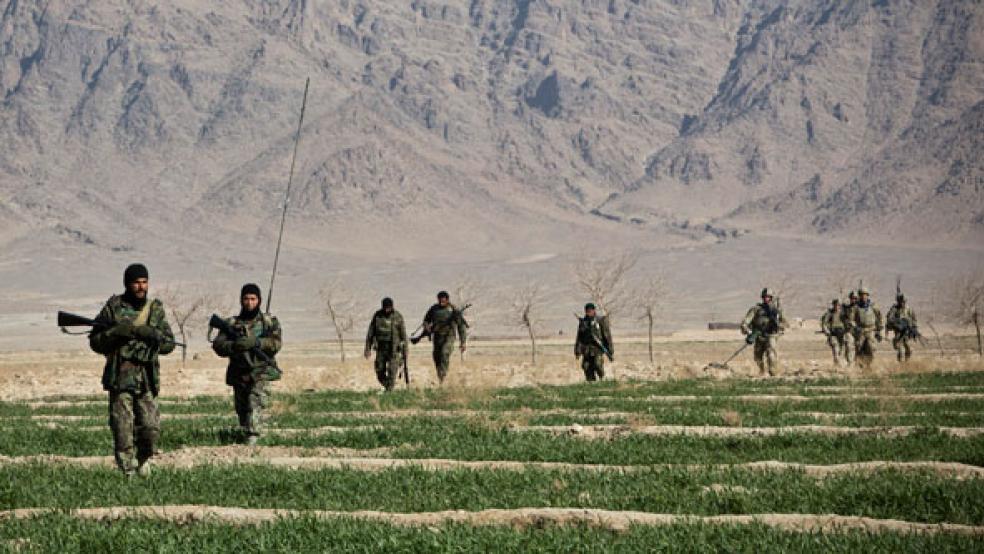As the majority of American troops prepare to withdraw from Afghanistan at the end of the year, two events have revealed the stark reality of the mess the United States is leaving behind.
First, reports indicate that a U.S. Army major general was killed and 14 others were wounded when a man dressed as an Afghan soldier opened fire at a base outside Kabul. The general is the highest-ranking military officer to be killed since the Vietnam War.
The attack reveals just how vulnerable American troops - even those with the highest of rankings - remain. It is also another example of an insider attack by Afghan Security Forces, or by members of the Taliban who have penetrated its ranks.
Related: Why Afghanistan Might Be the Marines' Last Fight
According to the Cost of National Security, some $753 billion has been allocated to pay for the Afghan war. Previous estimates by The Fiscal Times, the United States is on the hook for at least $111 billion in future costs in Afghanistan.
News of the attack comes on the same day that the Special Inspector General for Afghan Reconstruction issued a new report on the future of power supplies to Kandahar, the spiritual home of the Taliban. According to SIGAR chief John Sopko, the United States does not have a long-term plan to supply power to what is arguably the most important province in Afghanistan.
“[I]t appears that the U.S. still has no realistic plan for helping the Afghan government develop a sustainable source of electricity for the period between the end of the Kandahar Bridging Solution in September 2015 and when a stable source of power generation is projected to come online, at least three years later,” Sopko said in a letter to lawmakers. “The fact that USAID has commissioned a feasibility study to evaluate the viability of solar power to fill this gap seems overly vague.”
The lack of power in Kandahar is more than just a quality of life issue. During the surge in 2010, American troops fought a long and bloody campaign to wrestle back control of the province from the Taliban. It successfully held the province since then, forcing the Taliban, which has its roots in Kandahar City, to flee.
Related: America's Ugly Win in Afghanistan
The Pentagon has identified power in Kandahar “as a top counter-insurgency priority.” Now, SIGAR warns that the lack of power could allow the insurgency to once again take root.
“I am concerned that if the relatively tight timelines and cost estimates for a new ‘bridging solution to the bridging solution’ are inaccurate, and electrical service to the Kandahar area is compromised, the U.S. government may lose some of the hard-earned counter-insurgency and economic development gains made over the last few years,” Sopko warned.
Sopko added that the inability of the Afghan government to provide power in Kandahar does not inspire confidence in its ability to provide other basic services across the country. He warned that any solution would cost the United States much more than initially anticipated.
“[L]egitimate concerns remain about the ability of the U.S. and Afghan governments to jointly develop, undertake, and complete two new and ambitious infrastructure projects before the end of the year. Security risks associated with starting new high-profile infrastructure projects pose a particular concern,” Sopko said. In addition, I fear the initial cost estimates for the two projects may be overly optimistic. For example, the draft cost estimate for the Dahla Dam turbine project6 is only $10 million, while the cost of the Kajaki Dam Unit 2 Project, which has already received substantial assistance, is at least $75 million.”
Top Reads from The Fiscal Times





